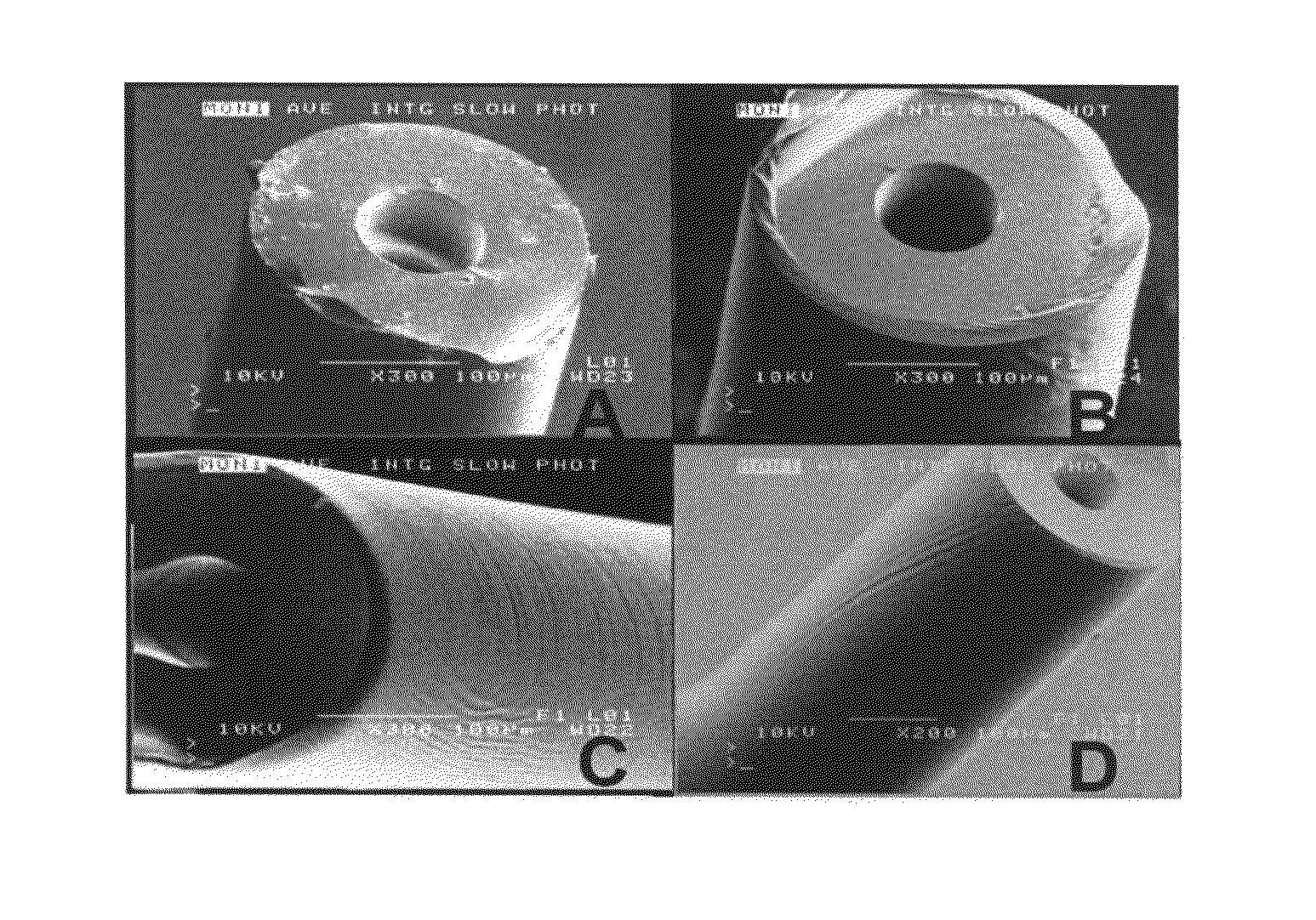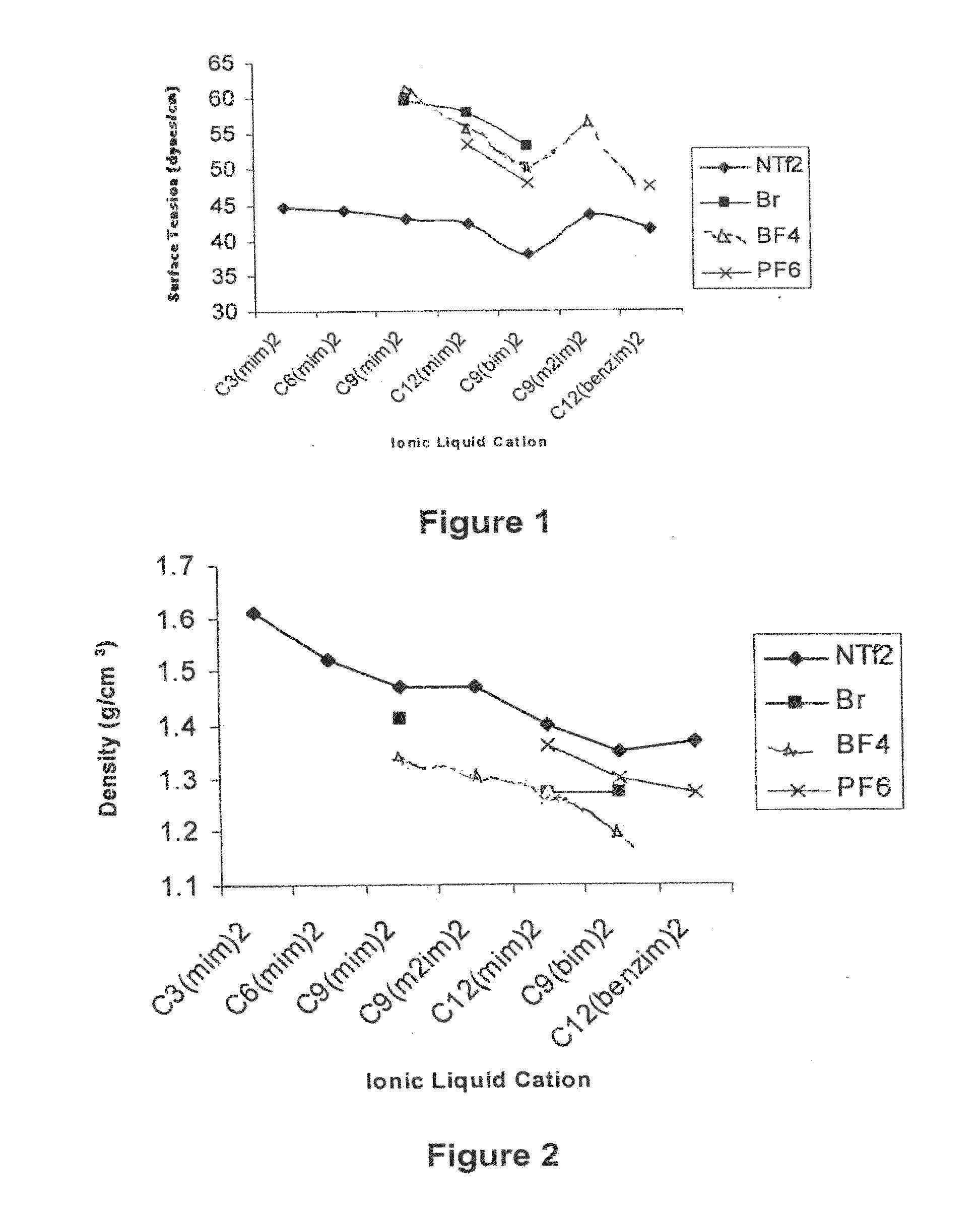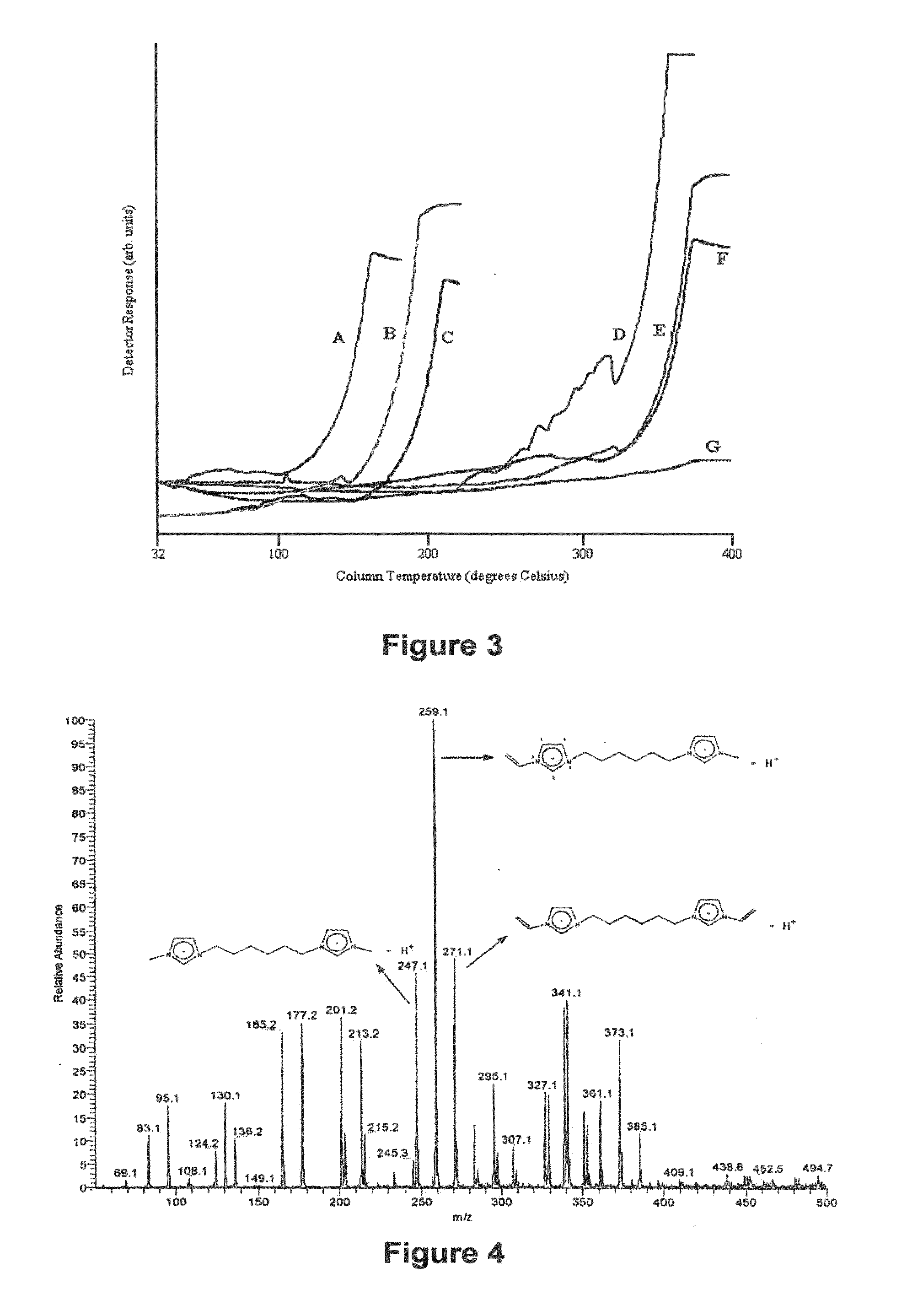Boron Selective Ionic Liquids and Polymeric Ionic Liquids, Methods of Making and Methods of Use Thereof
a technology polymeric ionic liquids, applied in the field of making and using of selective ionic liquids, can solve the problems of reducing the convenience and high-throughput nature of spme, continuing to be many properties that are not well-understood of ils, and reducing fiber-to-fiber reproducibility
- Summary
- Abstract
- Description
- Claims
- Application Information
AI Technical Summary
Benefits of technology
Problems solved by technology
Method used
Image
Examples
example a
Example 10
Synthesis of “Unsymmetric” Diionic Salts
[0311]The following compounds are used for the synthesis:
the alkyl linkage compounds:
the aryl linkage compounds:
the PEG linkage compounds:
[0312]The “unsymmetric” dicationic ILs are synthesized from dibromo-linkers according to the following steps:
[0313]First, the monocation intermediate is synthesized by reacting with the linkage compound that is in excess during the reaction to decrease the symmetric dicationic byproduct. For an example, the synthesis of ammonium-based monocation is shown in Scheme 1.
[0314]Then, the unsymmetrical diicationic ionic compound with the desired anion is synthesized by the metathesis reaction from the dibromide compound that is obtained as an example of ammonium-imidazonium based IL in Scheme 2.
[0315]Next, the unsymmetrical diicationic ILs are synthesized from the linkage compound having both bromo- and hydroxyl-groups, shown as an example of ammonium-imidazonium based IL in Scheme 3.
Example B
Polymeric Io...
example c
Example 2
Analytical Performance of the Method
[0470]Calibration curves were obtained using working standard solutions of analytes in the [HMIM] [FAP] IL at different concentrations while performing the extraction at the optimum extraction time and temperature. The figures of merit for the entire method, shown in EXAMPLE C Table 2, include the sensitivity, calibration range, correlation coefficients, error of the estimate, and limits of detection.
EXAMPLE C TABLE 2Figures of merit of the calibration curves for the overallmethod using a three component extraction and separationsystem comprised of ionic liquids.CalibrationErrorLODbrangeof the(mg ·Analyte(mg · kg−1)Slope ± SDaestimateRkg−1)Tricosane1-45137.7 ± 3.4 1640.9980.1Hexacosane1-35123.4 ± 4.6 1510.9960.2Triacontane1-3036.8 ± 2.236.30.9930.3Methyl behenate2-3025.9 ± 0.528.30.9980.4Methyl1-4513.4 ± 0.714.70.9940.4heneicosanoateMethyl2-4512.6 ± 0.729.60.9900.6tetracosanoateaSD: error of the slope for n = 8 calibration levels.bLOD: li...
example 1
Boron Selective TSILs Based on N-Methyl-D-Glucamine
[0475]Boron is an essential micronutrient for plants, largely required for metabolic activities. However, for some species (i.e., citrus plants) concentrations between 0.3-0.5 mg / L can result in decreased fruit output and ultimately death. Typical concentrations of boron in seawater lie between 4-5 mg / L. The World Health Organization has set a No Observed adverse Effect Level limit of 0.5 mg / L, due to boron's suspected ability to produce reproductive hazards and various teratogenetic properties. In many areas across the world, seawater desalination is expected to produce the main water supply. Current methods for removing boron from water involve the use of ion-exchange resins 42-44 and reverse osmosis membranes.
[0476]Therefore, new materials are needed to remove boron from water in the bulk scale in addition to trace amounts of boron in quantifying solutions.
[0477]The TSILs have now developed by the inventors herein, based on N-met...
PUM
| Property | Measurement | Unit |
|---|---|---|
| melting points | aaaaa | aaaaa |
| solid/liquid transition temperature | aaaaa | aaaaa |
| solid/liquid transition temperature | aaaaa | aaaaa |
Abstract
Description
Claims
Application Information
 Login to View More
Login to View More - R&D
- Intellectual Property
- Life Sciences
- Materials
- Tech Scout
- Unparalleled Data Quality
- Higher Quality Content
- 60% Fewer Hallucinations
Browse by: Latest US Patents, China's latest patents, Technical Efficacy Thesaurus, Application Domain, Technology Topic, Popular Technical Reports.
© 2025 PatSnap. All rights reserved.Legal|Privacy policy|Modern Slavery Act Transparency Statement|Sitemap|About US| Contact US: help@patsnap.com



